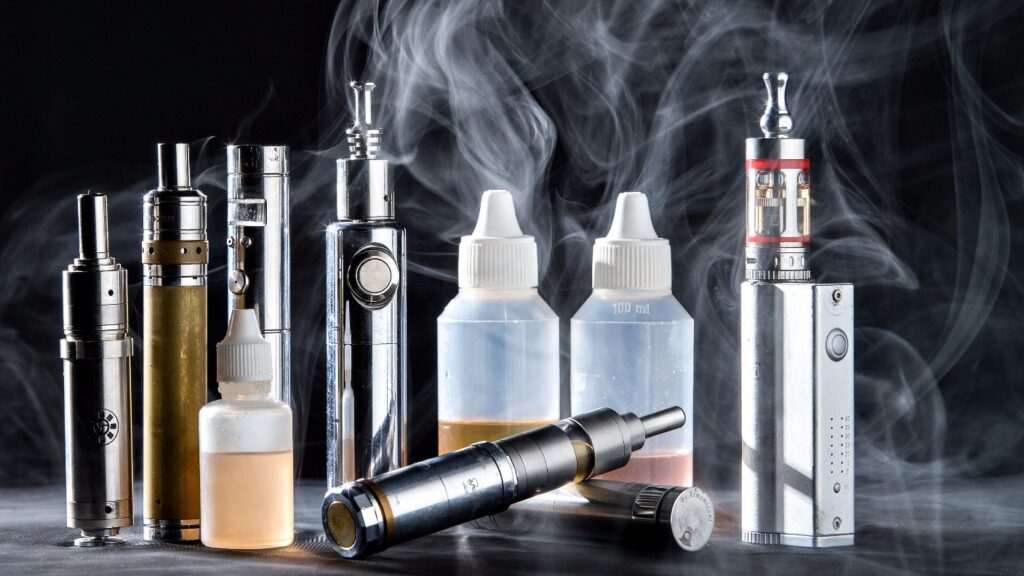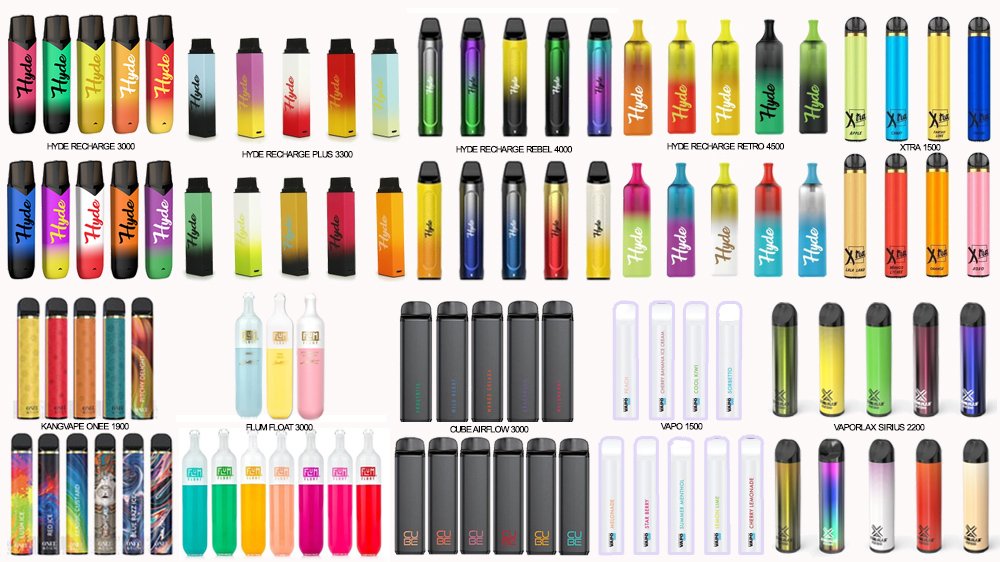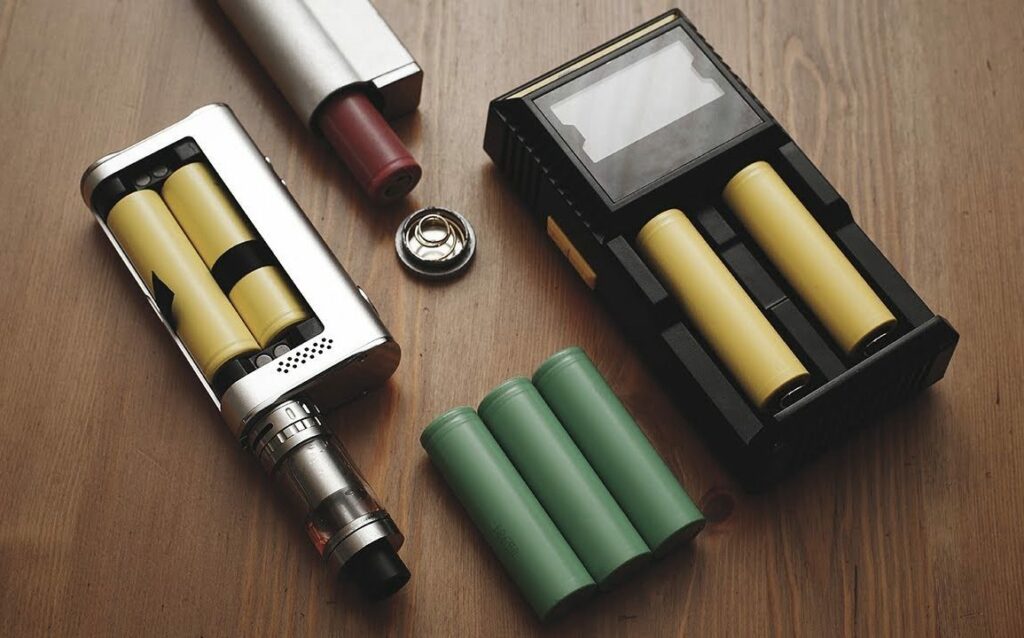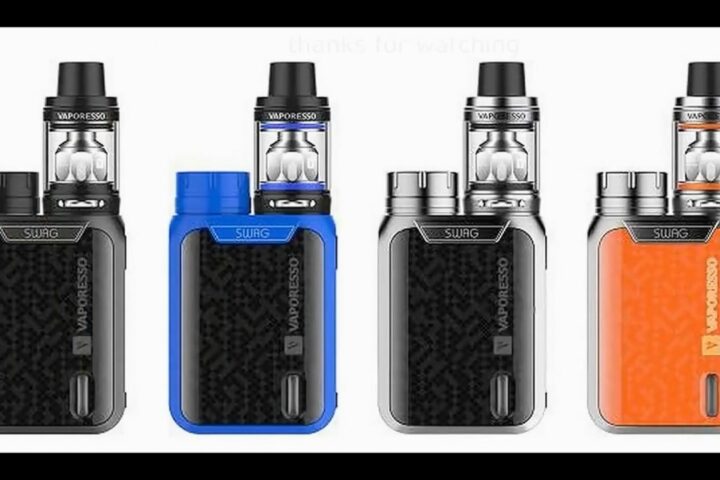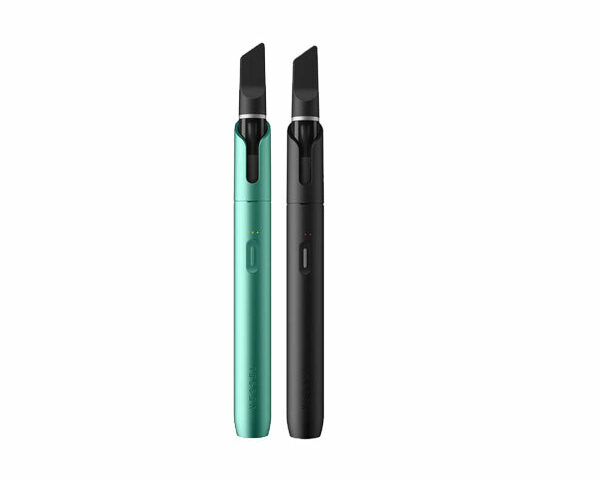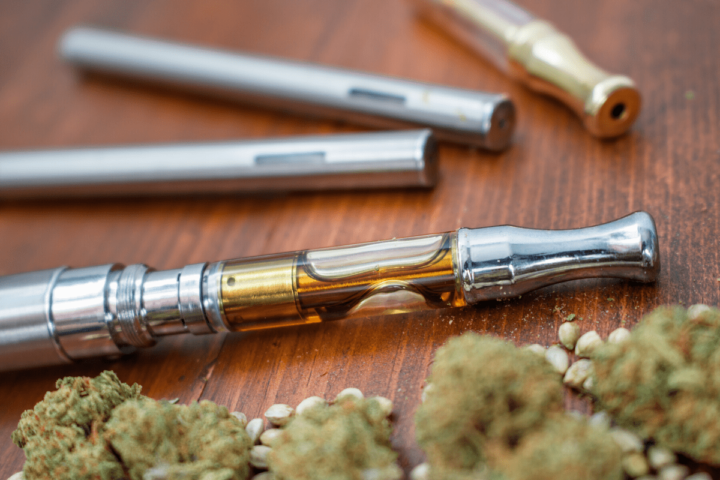Vaping Products
What is Vaping Products
Vaping products are devices that are used to inhale vaporized substances, commonly referred to as e-liquids or e-juices. These products have become increasingly popular in recent years, especially among young people, as a substitute for traditional smoking.
There are several types of vaping products available in the market, and they can vary in design, size, and functionality. Some of the most common types of vaping products include:
E-cigarettes:
These are handheld electronic devices that vaporize a liquid solution (e-liquid or e-juice) into an aerosol, which is then inhaled. E-cigarettes typically consist of a battery, a heating element, and a cartridge or tank that contains the e-liquid.
Vape pens:
These are similar to e-cigarettes but are typically larger and have a more powerful battery. They often have a refillable tank or cartridge and are designed for use with thicker e-liquids.
Mods:
Short for “modified e-cigarettes,” these are larger devices that allow for more customization and control over the vaping experience. They often feature interchangeable parts, larger batteries, and more advanced temperature control settings.
Pod systems:
These are compact and easy-to-use vaping devices that use pre-filled pods or cartridges that snap into place. They are designed to be simple and convenient, with no need for refilling or coil changing.
In addition to these vaping devices, there are also various types of e-liquids or e-juices available, which are the substances that are vaporized and inhaled. These liquids typically contain a combination of propylene glycol, vegetable glycerin, flavorings, and often nicotine.
It is important to note that vaping products can have potential health risks, particularly for young people and those with pre-existing health conditions. The long-term effects of vaping are not yet fully understood, and there have been reports of lung damage and other health complications associated with vaping.
Furthermore, it is important to follow safe vaping practices, such as using high-quality products, avoiding counterfeit or black-market products, and properly maintaining and storing vaping devices. It is also essential to be aware of the laws and regulations regarding vaping in your area, as they can vary widely.
In conclusion,
vaping products are devices that allow users to inhale vaporized substances, such as e-liquids or e-juices. They come in various designs and types, and it is important to use them safely and responsibly. As with any substance or product, it is essential to be informed and educated before using vaping products.
How to Use Vaping Products
Using vaping products can be a fun and satisfying way to enjoy different flavors and experiences. However, it is essential to use vaping products safely and responsibly to avoid any potential health risks. Here is a step-by-step guide on how to use vaping products:
Choose the right device:
Select a vaping product that suits your needs and preferences. Different vaping devices have different features and functions, so consider factors such as size, design, power, and ease of use before making a purchase.
Charge the device:
Before using a new vaping product, it is essential to charge it fully. Follow the manufacturer’s instructions on how to charge the device, and make sure to use a compatible charger.
Fill the tank or cartridge:
If you are using a refillable vaping device, fill the tank or cartridge with your preferred e-liquid or e-juice. Be careful not to overfill the tank, as this can cause leakage or damage to the device. If you are using a pre-filled pod system, simply insert the pod into the device.
Prime the coil:
The coil is the heating element that vaporizes the e-liquid. Before using a new coil or filling the tank, it is essential to prime the coil to ensure optimal performance. To prime the coil, add a few drops of e-liquid onto the exposed cotton wick and let it soak for a few minutes.
Turn on the device:
Most vaping devices require you to turn them on before use. Follow the manufacturer’s instructions on how to turn on your specific device. Once the device is turned on, you may need to adjust the settings to your preferred temperature or wattage.
Inhale:
Take a slow, steady draw from the mouthpiece of the device. Avoid inhaling too quickly or forcefully, as this can cause discomfort or irritation. Hold the vapor in your mouth briefly before inhaling it into your lungs.
Exhale:
Exhale the vapor slowly and steadily. Enjoy the flavor and sensation of the vapor, but be aware of how much you are inhaling and exhaling.
Maintain and clean the device:
Regularly clean and maintain your vaping device to ensure optimal performance and longevity. Follow the manufacturer’s instructions on how to clean and maintain your specific device.
Be aware of your surroundings:
When using vaping products, be aware of your surroundings and respect others’ preferences and boundaries. Some places may prohibit the use of vaping products, so be sure to check local laws and regulations.
In conclusion,
using vaping products can be an enjoyable and satisfying experience when done safely and responsibly. Follow these steps to ensure that you are using your vaping device correctly and in a way that minimizes any potential health risks. If you have any questions or concerns, consult with a healthcare professional or a reputable vaping supplier.
What are the Benefits of Vaping Products
There are several potential benefits of using vaping products, which is why they have become increasingly popular as an alternative to traditional smoking. Here are some of the key benefits:
Reduced health risks:
Vaping products are generally considered to be less harmful than traditional smoking. According to the UK Royal College of Physicians, vaping is at least 95% less harmful than smoking. This is because vaping does not involve combustion or the production of tar and other harmful chemicals found in tobacco smoke.
Control over nicotine intake:
Many vaping products allow users to control the amount of nicotine they consume. This can be beneficial for people who are trying to quit smoking or reduce their nicotine intake, as they can gradually decrease the nicotine level in their e-liquids.
Variety of flavors:
Vaping products come in a wide range of flavors, from fruity to sweet to savory. This variety can make the vaping experience more enjoyable and can also help people reduce their cravings for traditional cigarettes.
Convenience and ease of use:
Vaping products are generally easy to use and do not require the same level of preparation and clean-up as traditional smoking. They can also be more discreet, as there is no smoke or odor involved.
Cost-effective:
While the initial cost of a vaping device may be higher than that of traditional cigarettes, vaping can be more cost-effective in the long run. E-liquids are typically cheaper than traditional cigarettes, and many vaping devices are designed to be reusable and long-lasting.
Social acceptance:
Vaping is generally more socially acceptable than smoking, as there is no smoke or odor involved. This can be beneficial for people who want to enjoy nicotine without the stigma associated with traditional smoking.
It is important to note that while vaping may have potential benefits, it is not without its risks. The long-term effects of vaping are still not fully understood, and there have been reports of lung damage and other health complications associated with vaping. Additionally, it is important to use vaping products responsibly and in accordance with local laws and regulations.
Potential smoking cessation aid:
Many people have successfully used vaping products as a tool to quit smoking traditional cigarettes. According to a study published in the New England Journal of Medicine, vaping is more effective than traditional nicotine replacement therapies in helping people quit smoking.
Less secondhand smoke:
Vaping products produce vapor, not smoke, which means there is less secondhand smoke involved. This can be beneficial for people who live or work with others who are sensitive to smoke or who have respiratory issues.
No ash or cigarette butts:
Vaping products do not produce ash or cigarette butts, which can be messy and hazardous to the environment. This can be beneficial for people who want to reduce their environmental impact.
Customizability:
Many vaping devices are customizable, allowing users to adjust settings such as temperature, wattage, and airflow to suit their preferences. This can make the vaping experience more enjoyable and personalized.
In conclusion,
vaping products have several potential benefits, including reduced health risks, control over nicotine intake, variety of flavors, convenience and ease of use, cost-effectiveness, social acceptance, potential smoking cessation aid, less secondhand smoke, no ash or cigarette butts, and customizability. However, it is important to use vaping products responsibly and in accordance with local laws and regulations. It is also important to understand that vaping may still carry risks, and it is always a good idea to consult with a healthcare professional before starting any new nicotine consumption habit.
What to Look for when shopping for Vaping Products
If you’re looking to start vaping or upgrade your current setup, there are a few key factors to consider when shopping for vaping products. Here’s what to look for:
Type of vaping device:
There are several types of vaping devices available, including pod systems, box mods, and pen-style devices. Each type has its own advantages and disadvantages, so it’s important to research each option and choose one that meets your specific needs.
Battery life:
The battery life of a vaping device can vary widely depending on the type of device and the size of the battery. If you plan on using your device frequently or for extended periods of time, it’s important to choose a device with a long battery life.
Capacity of e-liquid tank:
The capacity of the e-liquid tank can also vary depending on the type of device. If you plan on using your device frequently or for extended periods of time, it’s important to choose a device with a larger capacity tank to avoid constantly refilling.
Coil resistance:
The resistance of the coil in a vaping device can affect the overall vaping experience, including the flavor and vapor production. Lower resistance coils tend to produce more vapor and flavor, but also use more battery power and e-liquid.
Airflow control:
Some vaping devices offer adjustable airflow control, which allows users to adjust the amount of air that passes through the device while vaping. This can affect the flavor, vapor production, and overall vaping experience, so it’s important to choose a device with airflow control if this is a feature you’re interested in.
Brand reputation:
When shopping for vaping products, it’s important to choose a reputable brand with a good track record for safety and quality. Look for reviews from other vapers and research the company’s history and reputation.
Safety features:
Some vaping devices offer safety features such as overcharge protection, short circuit protection, and temperature control. These features can help prevent accidents and ensure a safe vaping experience, so it’s important to choose a device with adequate safety features.
Price:
Vaping devices and accessories can vary widely in price, so it’s important to set a budget and choose products that fit within your price range. Keep in mind that higher-priced products may offer more features and higher quality materials, but this isn’t always the case.
In conclusion,
when shopping for vaping products, it’s important to consider factors such as the type of device, battery life, e-liquid tank capacity, coil resistance, airflow control, brand reputation, safety features, and price. By doing your research and choosing products that meet your specific needs and preferences, you can enjoy a safe and satisfying vaping experience.
FAQs-Vaping Products
What are the 4 types of vapes?
The four types of vapes commonly referred to are:
- Cigalikes: These are small and often resemble traditional cigarettes in appearance. They are typically disposable and come pre-filled with e-liquid.
- Vape Pens: Vape pens are larger than cigalikes and have a pen-like shape. They consist of a battery, a tank or cartridge for e-liquid, and a heating element (coil). They offer more customization options and are refillable.
- Pod Systems: Pod systems are compact and user-friendly devices that use pre-filled or refillable pods. They typically have a small form factor, auto-draw or button-activated firing, and a moderate power output.
- Box Mods: Box mods are larger, more powerful devices with advanced features and customizable settings. They often have a rectangular or box-like shape and allow for more control over wattage, temperature, and other variables. They usually require separate batteries and tanks.
What products are in vaping?
Vaping products typically consist of the following components:
- Vape Device: This includes the main device or mod that houses the battery and controls the heating element, as well as the necessary circuitry and safety features.
- Atomizer or Tank: This is the component that holds the e-liquid and houses the heating element, which is typically a coil. It is responsible for vaporizing the e-liquid.
- E-liquid or Vape Juice: This is the liquid solution that is vaporized and inhaled during vaping. It usually contains a mixture of propylene glycol (PG), vegetable glycerin (VG), flavorings, and optionally nicotine.
- Coils: These are heating elements made of wire wrapped around a wicking material, such as cotton. When the coil is activated, it heats up and vaporizes the e-liquid.
- Batteries: Vape devices are powered by rechargeable batteries, which provide the necessary electrical energy to heat the coil and operate the device.
What is a good vape to buy?
Determining a “good” vape to buy depends on personal preferences, needs, and vaping experience. Some popular and well-regarded vape brands and models include:
- SMOK: Known for its wide range of devices with various features and options.
- Vaporesso: Offers a variety of reliable and user-friendly devices, including pod systems and box mods.
- GeekVape: Known for durable and high-performance devices, particularly in the realm of sub-ohm tanks and rebuildable atomizers.
- Voopoo: Offers innovative devices with advanced features, such as high wattage capabilities and gene chip technology.
- Uwell: Known for their well-designed devices and popular sub-ohm tanks.
- Aspire: Offers a range of devices for both beginner and advanced vapers, focusing on functionality and quality.
What are the top 5 best vapes?
Determining the top 5 best vapes can be subjective and can vary based on personal preferences and needs. However, here are five popular and highly regarded vapes:
- SMOK Nord 4: A versatile and powerful pod system with adjustable wattage and a wide range of coil options.
- GeekVape Aegis X: A durable and high-performance box mod with a large display, excellent battery life, and water/dust/shock resistance.
- Vaporesso Luxe PM40: A compact and user-friendly pod system with adjustable wattage, excellent flavor production, and a large battery capacity.
- Voopoo Drag X Plus: A stylish and powerful pod mod with a large battery capacity, adjustable wattage, and compatibility with a wide range of coils.
- Uwell Caliburn G: A reliable and compact pod system with a sleek design, good battery life, and consistent performance.
Are vapes better than cigs?
Vapes are generally considered to be less harmful than traditional cigarettes. They do not produce tar, which is a major source of harm in cigarettes. Vaping also eliminates the combustion process, reducing the exposure to harmful chemicals produced by burning tobacco. However, it is important to note that while vaping may be a potentially less harmful alternative for adult smokers, it is not without risks. Vapes still contain nicotine, which is addictive, and the long-term health effects of vaping are still being studied. Quitting nicotine use altogether is the best option for improving health. If you are a non-smoker, it is advisable to avoid vaping altogether.
How safe are vapes?
The safety of vapes is a subject of ongoing debate and research. While some studies suggest that vaping is less harmful than traditional smoking, it is important to note that it is not without risks. Vapes contain various chemicals, including nicotine, which is highly addictive. Additionally, there have been cases of lung injuries associated with vaping, particularly when using illicit or adulterated products. The long-term health effects of vaping are still not fully understood, and it is generally recommended to avoid vaping, especially for non-smokers and youth. For those looking to quit smoking, there are approved cessation methods available that have been shown to be more effective and safer.
Is it OK to vape indoors?
The acceptability of vaping indoors depends on the specific location and its policies. In many public places, including workplaces, restaurants, and public transportation, vaping is not allowed indoors. This is because the aerosol produced by vaping can contain potentially harmful chemicals and may bother or affect others in the vicinity. Additionally, some jurisdictions have implemented laws that prohibit indoor vaping to protect public health. It is always important to respect the rules and regulations of the specific location and consider the potential impact of vaping on others before doing so indoors.
What are 3 dangers of vaping?
- Health Risks: One of the primary dangers of vaping is the potential health risks associated with it. Vaping exposes users to harmful chemicals, including nicotine, heavy metals, and various toxic compounds. These substances can cause lung damage, respiratory problems, cardiovascular issues, and other health complications.
- Addiction: Vaping devices often contain nicotine, which is highly addictive. Many individuals, especially young people, may start vaping without realizing the addictive nature of nicotine. This can lead to dependence and make it difficult for users to quit, potentially leading to a lifelong addiction to nicotine.
- Lack of Regulation: The vaping industry has faced challenges in terms of regulation. The lack of strict regulations has allowed for the production and sale of potentially unsafe vaping products. Some products may contain substandard ingredients, improper labeling, or unreliable manufacturing practices, putting users at risk of adverse effects.
Can I get a vape on the NHS?
No, you cannot get a vape on the NHS (National Health Service) in most cases. The NHS does not typically provide vaping devices as part of their services or treatment options. The NHS primarily focuses on promoting smoking cessation methods that are proven to be effective and have undergone rigorous testing and regulation. These methods may include nicotine replacement therapies (such as patches, gums, or inhalers) and prescription medications. If you are looking to quit smoking or vaping, it is advisable to consult with your healthcare provider for appropriate guidance and support.
How many puffs of a vape is equal to a cigarette?
It is challenging to determine an exact equivalence between the number of puffs of a vape and a cigarette because various factors come into play, such as the type of device, the strength of the e-liquid, and individual smoking or vaping patterns. Additionally, the amount of nicotine delivered through vaping can vary significantly depending on the device and the user’s inhaling technique. As a result, it is difficult to establish a precise comparison between the two.
What happens 24 hours after quitting vaping?
After quitting vaping for 24 hours, several positive changes begin to occur in the body. Nicotine levels in the bloodstream start to decrease, resulting in improved circulation and a reduction in heart rate and blood pressure. The senses of taste and smell may become more acute as the body’s ability to detect flavors and scents improves. Breathing becomes easier as lung function begins to recover, and coughing and shortness of breath may diminish. Additionally, withdrawal symptoms, such as cravings and irritability, may be present but typically start to subside after the initial 24-hour period. Quitting vaping is a significant step toward better health and overall well-being.
Is vaping easier to quit than cigarettes?
The ease of quitting vaping compared to cigarettes can vary from person to person. Some individuals may find it easier to quit vaping due to factors such as the ability to gradually reduce nicotine levels in e-liquids or the absence of other chemicals found in cigarettes. However, for others, vaping can be just as challenging to quit as smoking. Both vaping and smoking involve nicotine addiction, which can lead to withdrawal symptoms and cravings. Quitting any form of nicotine use requires determination, support, and personalized strategies for success. It’s important to seek professional guidance and support when attempting to quit either vaping or smoking.
What are 5 risks of vaping?
- Nicotine addiction: Vaping products often contain nicotine, which is highly addictive. Regular use can lead to dependence and make it difficult to quit.
- Health effects on lungs: Vaping can cause lung damage and respiratory issues. The inhalation of aerosolized chemicals can lead to lung inflammation, coughing, wheezing, and even a condition called “vaping-associated lung injury.”
- Unknown long-term effects: As vaping is a relatively new phenomenon, the long-term health effects are still not fully understood. It is unclear what potential risks may emerge from prolonged use of e-cigarettes.
- Chemical exposure: Vaping liquids contain various chemicals, including harmful substances such as formaldehyde, acrolein, and diacetyl. Inhalation of these chemicals can have negative effects on overall health.
- Youth addiction and gateway to smoking: Vaping has become increasingly popular among young people. It can act as a gateway to traditional cigarette smoking and expose them to the harmful effects of nicotine at an early age.
What happens when you switch smoking to vaping?
When you switch from smoking to vaping, several changes occur in the body. Firstly, since vaping doesn’t involve burning tobacco, you avoid the harmful toxins and chemicals produced by combustion, which can have detrimental effects on the lungs and overall health. Vaping allows you to inhale vaporized e-liquids, which may contain nicotine but lack many of the harmful substances found in cigarettes.Switching to vaping can lead to improvements in respiratory health, as coughing and wheezing often associated with smoking may diminish over time. Additionally, since vaping doesn’t produce secondhand smoke, it reduces the risk of passive exposure to harmful substances for those around you.
Is vape bad for your teeth?
Vaping can have negative effects on oral health, including potential harm to your teeth. While it is generally believed that vaping is less harmful to oral health compared to smoking traditional cigarettes, it is not without risks.Vaping exposes the mouth to heat, chemicals, and potentially irritating substances present in the e-liquids. The heat can cause dry mouth, which reduces saliva production and increases the risk of tooth decay and gum disease. The chemicals and flavorings in e-liquids can also contribute to dental issues. Some flavorings, such as those containing high levels of acids, can erode tooth enamel over time. Additionally, nicotine in vaping products can contribute to teeth discoloration and may negatively impact gum health.
- Yoda OG Aka Yoda Weed Strain Information - October 10, 2024
- Yellow Zushi Aka Yellow Sushi Weed Strain Information - October 10, 2024
- Wappa Weed Strain Information - October 8, 2024

